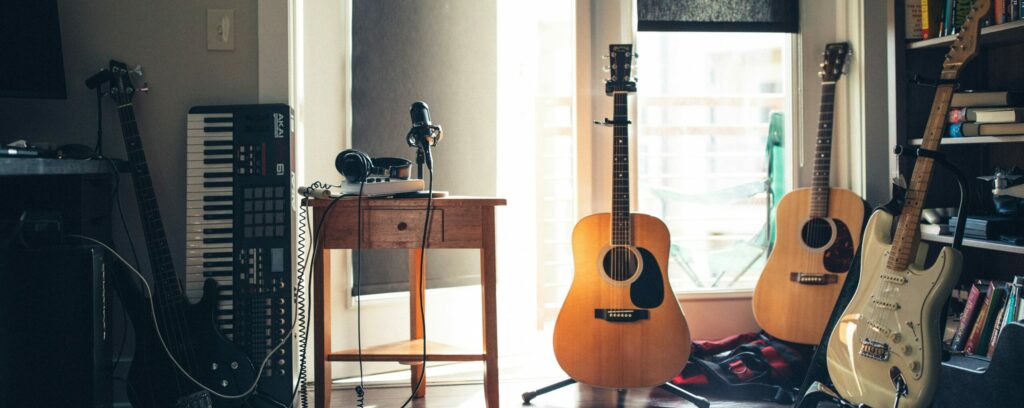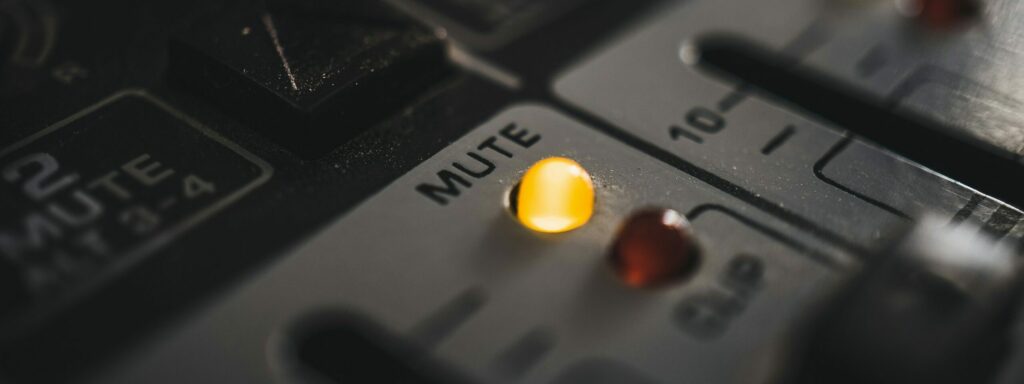Whilst many of us are perfectly competent at writing a song, the thing that’s always a little tricky is transitioning. Music transitions come in many shapes and sizes and can help to create a sense of progression for the listener. Not only that, but appropriate music transitions can help to invoke emotion where you can’t use melody or lyrics to do the same. Let’s look into four simple but effective ways in which you can elegantly move your music forward.
Risers and Reverse Reverb
For those of you who aren’t aware, a riser is used to describe a transitional sound. It either sweeps up and/or down, creating a crescendo/decrescendo effect. Some come in simple forms, such as white noise. Others are more intricate and use a dense soundscape to fit specific songs and fill out missing frequencies. Whilst many of these come as prepared samples, they can also be created using elements of your own composition. This offers a more unique and appropriate sound.

Reverse reverbs act in a similar fashion to risers. However, they are created using the onset of a certain sound source and allow us to build towards that sound. To use this effect, you will need to follow a few simple steps.
- First, reverse the sound that you are looking to apply the effect to. This could be the initial kick drum in a drop or the first word in a vocal line.
- Next, apply reverb to this sound. The length of this reverb will dictate how long your reverse reverb is. You’ll have to experiment with this in order to achieve the desired sound. Once you have the reverb applied, you will need to bounce and import the audio, creating a new file.
- Finally, reverse the sound back to the correct order. You will now notice that the reverb builds up backward, finishing with the original dry sound. For a great example of this being used as a music transition, check out Firestarter by The Prodigy (around the 0:55 mark).
Music Transitions through Filter Automation
Automating filter parameters can lead to all sorts of crazy soundscapes. Check out our guide on how to use mix automation. While this is most commonly seen in automating high and low pass filters, it shouldn’t be limited to this. A great way to build density and perceptual loudness is to automate the size and amount of your reverb. Creating contrast and progressively moving from a dry sound to a huge, wet sound offers a similar sense of progression to that which we get from white noise risers. Furthermore, the movement from extremely wet back to very dry creates a clear key point within the song, indicating to the listener that we have reached a new section. You can also try this with delays, creating crazy rhythmic delay patterns that cascade across the stereo field. This wall of sound helps to clearly define the end of a movement.
As previously mentioned, automated EQ is also a great way to create a transition. Moving filters across a certain number of bars can help to reveal a sound as you build up to a chorus/drop. Typically, automating a low pass filter is a great way to slowly reveal a sound, such as a lead synth or a vocal hook. Automating a high pass filter is an effective way to move from a quiet, airy section into a fuller section. Using this technique is a great way to clearly define pre-chorus and chorus sections.
Finally, we can look into automating the parameters of our effects. Progressively increasing the amount or speed of things like chorus, phase, and flanging helps certain elements to stand out. We could automate the amount of flange on our lead guitar as we build up to the solo in order to position it more clearly as the focal point of the mix. Equally, we could slowly filter in phasing to our drum overheads to create a sense of movement in a breakdown. It’s all about plugin experimentation and seeing what interesting sounds can be created.
Mutes & Breakdowns
While the concept of breakdowns can be thought of as a structural element, we can use them in very short time frames to improve music transitions. This is a very common technique in the Hip-Hop world and uses dynamic contrast to make the drop into a chorus feel bigger despite a lack of change in the instrumentation or melody. This can be simply done by creating very short, one-beat breakdowns at the end of our verses. By removing the drums for a very short amount of time or simply muting the entire track, we provide the listener a split second to breathe. This simple and short drop-in dynamic lets the ear rest, making the next section we hear feel more powerful.

TL;DR
Music transitions are very important for creating clear-cut definitions between the sections of our songs. You can write the greatest riffs ever heard, but without the impact to support them, they can fall flat. Reverse reverb is a great way to introduce new key sounds into your music. Automating EQ and effect parameters can allow you to create unique soundscapes and build suspense when introducing new elements into a song. Finally, creative use of dynamics can allow you to create room in your music. Small breakdowns and mutes let the song breathe and improve the perceived impact of the following section.
À propos de l'auteur

Tim Dunphy
Ingénieur audio et rédacteur de contenu spécialiséPlus de 10 ans d'expérience dans le domaine de l'audio. Tout, de l'enroulement de XLR au mastering d'albums. Je suis un self-made-man et je garde mes actifs en bitcoins. Qu'y a-t-il de plus à savoir ?
Laisse un commentaire
Connecte-toi pour commenter.


